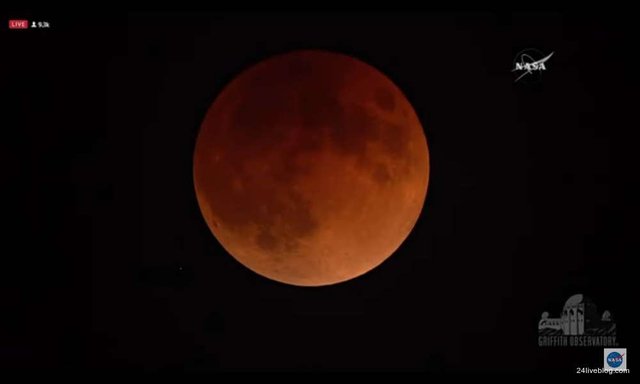Super Blue Blood Moon 2018: Here Are The Best Photos and Videos
A Blue Moon is when two full moons happen in the same calendar month; lunar eclipses occur when the moon passes into Earth's shadow; and supermoons happen when the moon's perigee — its closest approach to Earth in a single orbit — coincides with a full moon. In this case, the supermoon also happens to be the day of the lunar eclipse.
The first full moon of January occurred on the night of Jan. 1 or the morning of Jan. 2, depending on your location.You can see our full coverage of that event here:
Biggest Full Moon of 2018 Shines in Spectacular New Year's Photos
The second full moon and the lunar eclipse will occur on the night of Jan. 31 or the morning of Feb. 1. And the supermoon will take place on the night of Jan. 30, which is technically one day before the moon reaches peak fullness, but even NASA is willing to call the event a supermoon nonetheless. [How to Photograph the Supermoon: NASA Pro Shares His Tips]
On Jan. 31, not every place on Earth will see the Blue Moon this month, because the second full moon of January won't technically appear in those places until Feb. 1. These places include regions in eastern Asia and eastern Australia, where skywatchers won't see the first full moon until Jan. 2 and the next full moon until the morning of Feb. 1. For example, in Melbourne, Australia, the full moon arrives on Jan. 2 at 1:24 p.m. local time, and the next full moon is on Feb. 1 at 1:26 a.m., so skywatchers will technically miss the Blue Moon by less than 2 hours.
But their fellow Aussies in Perth, in the southwestern part of the country, will get one, since the first full moon occurs on Jan. 2 at 10:24 a.m. local time, so the moon will still look quite full when it rises at 7:35 p.m. On Jan. 31, the moon rises at 7:09 p.m. and reaches fullness at 9:26 p.m.
Blue Moons are not as rare as the old saying "once in a blue moon" implies; they happen about once every 2.7 years, because the number of days in a lunation (new moon to new moon) is a bit less than the usual calendar month — 29.53 days as opposed to 31 or 30 days (except for February, which has 28 days, so a blue moon cannot occur). A sequence of 12 lunations adds up to 354.36 days, against the 365.24 days in a year. The discrepancy adds up over time, until a year will have 13 lunations as opposed to 12. For some observers, 2018 will feature two Blue Moons — one in January and one in March (with no full moon in February).